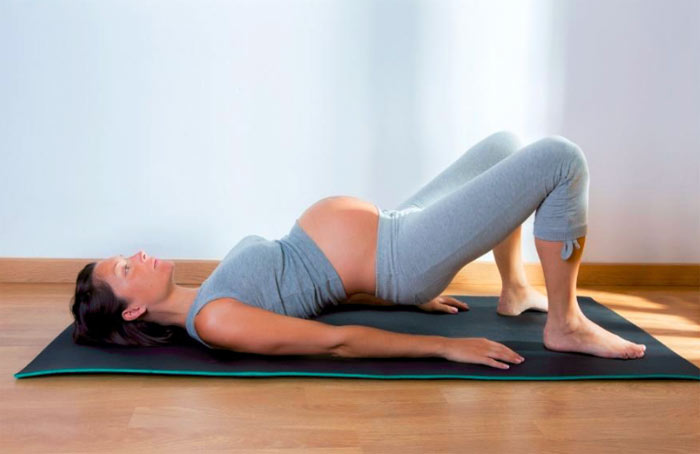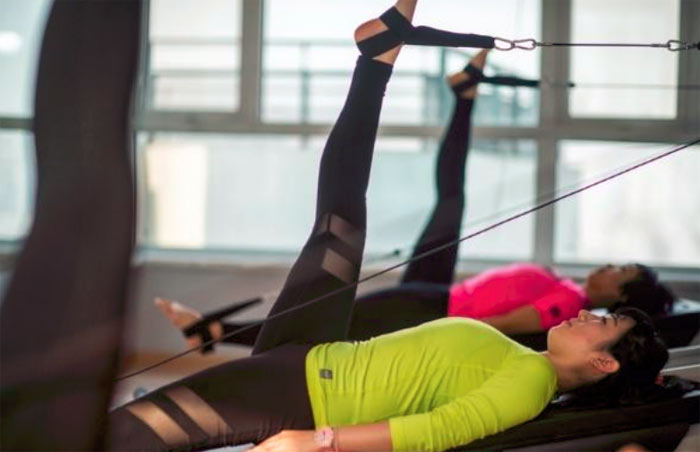5 Exercises to Ease the Discomfort of Urinary Incontinence
Most women have some degree of physical activity in their day to day life, but for the 25% who experience urinary incontinence, focusing on specific exercises to strengthen the pelvic floor is a must. Urinary incontinence, or the involuntary leakage of urine, can happen for a slew of reasons, but many women experience the embarrassment and discomfort of the condition while pregnant or after childbirth. This is because the muscles that support the bladder, and provide its control, are weakened thanks to excess pressure while carrying a child and stretching after childbirth. It may seem as though there are no non-invasive ways to manage urinary incontinence, but the following simple exercises can provide some relief.

Kegels
Many women have heard about Kegel exercises, but most may be unaware of their benefits when it comes to urinary incontinence during pregnancy or after. Kegels help strengthens the bladder muscles to ultimately improve bladder control. Doing Kegel exercises on a regular basis is one of the best ways to help with incontinence over time, and help you avoid more invasive procedures like pelvic mesh surgery. A medical negligence claims team shares that taking a more natural approach to urinary incontinence may not be the go-to recommendation from a medical provider, but the dangers of pelvic mesh surgery and other highly invasive procedures can be devastating. Instead, add Kegels to the routine, following the below guidance:
- Start by squeezing the pelvic floor muscles (the ones that are used to stop a urine midstream)
- Hold the contraction for five to ten seconds
- Fully relax the muscles
- Repeat for up to ten repetitions
Kegels are highly recommended because they can be done anywhere, at any time. The more comfortable you get with contracting and relaxing the pelvic floor muscles, the more you will strengthen the bladder.
Squats with Pulsing
Another exercise to perform to help improve bladder strength is a squat with a pulse. To do this exercise:
- Spread your feet shoulder-width apart
- Turn toes slightly outward
- Lower into a squat position with the pelvis forward slightly
- Pulse up and down by an inch (or two) ten times
- Inhale as you squat down and exhale while contracting the pelvic floor muscles on the way up
Pilates

For women who want to take the stress off their joints and back, pilates can be a great go-to exercise routine for improving the pelvic floor muscles over time. Pilates is meant to offer a workout that stretches and strengthens the entire body, including the abdomen, back muscles, and yes, the pelvic floor. When focusing on abdominal exercises, the pelvic floor naturally supports the core, giving an unexpected workout to the pelvic floor muscles. A stronger abdomen leads to a stronger pelvic floor, and ultimately, fewer occurrences of urinary incontinence.
Running

Many women may feel as though running is the enemy of urinary incontinence, given the stress, it places on the body. However, recent studies have shown that focusing on the form of the body during a job or run can actually improve the pelvic floor muscles over time. Running in a ski jump position, meaning leaning slightly forward, reduces the pressure on the heels and behind. That pressure is naturally transferred to the front of the pelvis, working to strengthen those muscles.
Pelvic Floor Activators
Another great exercise for increasing the strength of the pelvic floor is a pelvic floor activator. This exercise is simple for most women and does not require a lot of time or energy to do. To perform a pelvic floor activator:
- Sit on a sturdy chair, toward the edge of the seat
- Place a resistance band around the thighs
- Bring the feet together on the floor
- Press the knees apart and then bring them back together
- Contract the inner thigh and glute muscles when the knees close
Sets of three, with 20 repetitions each, including a ten-second break between each set, is recommended for most women. This can be done up to five times a week to help with pelvic floor muscle strength.
Anyone or a combination of these exercises can be incredibly beneficial to women dealing with the frustration of urinary incontinence. Find the exercise(s) that feel right for your body and strength level, and commit to following routine several days each week to strengthen your pelvic floor muscles.
